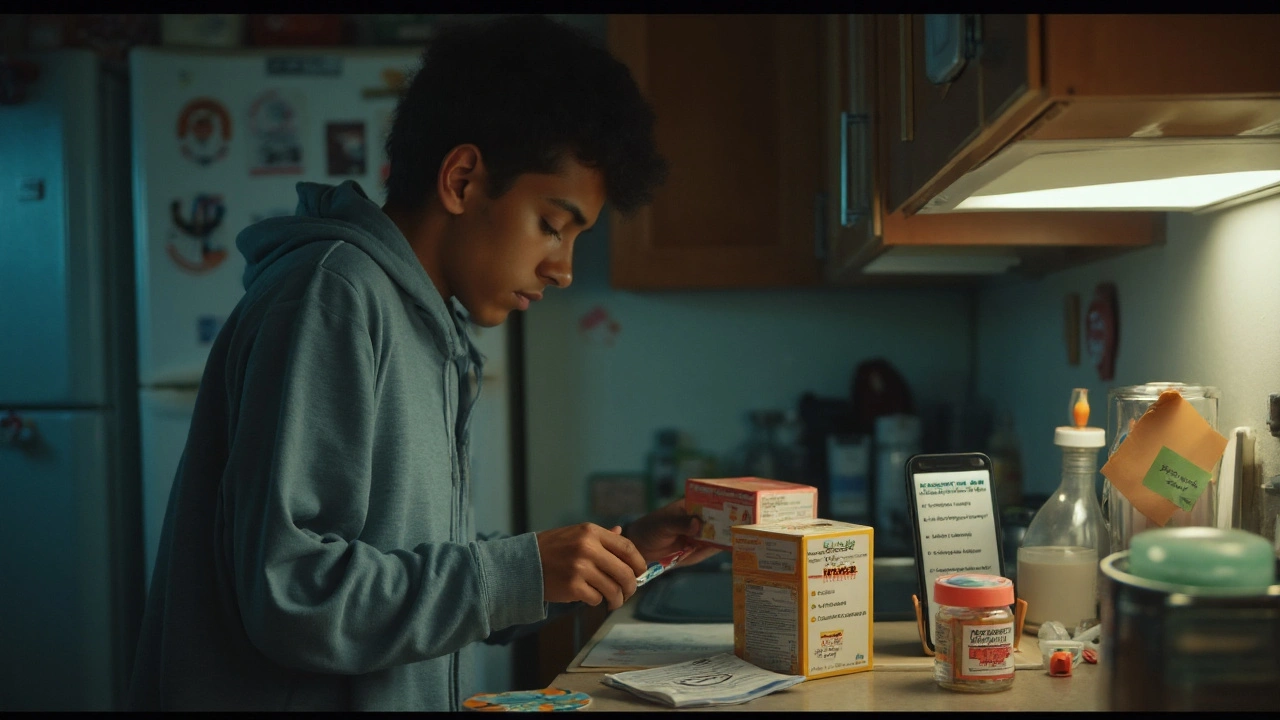Self‑Medication: How to Treat Yourself Safely and Effectively
Ever grabbed a painkiller from the cabinet and wondered if you were doing it right? Self‑medication can save time and money, but only when you know the basics. Below are the most useful habits to keep you healthy without a doctor’s visit every time.
Read Drug Interaction Charts Like a Pro
The first thing you need to master is the interaction chart. Those tables aren’t as scary as they look. Look for three key columns: the drug name, the interaction level (usually green, yellow, red), and the recommended action. Green means it’s safe, yellow suggests caution, and red means don’t mix.
Start by writing down every medication you take—prescriptions, over‑the‑counter, even herbal supplements. Then find their rows on the chart. If two drugs are highlighted in yellow, check the notes: often the advice is to space them out by a few hours or lower the dose.
When you hit a red warning, pause. A quick call to your pharmacist can confirm whether the combo is truly risky or if there’s a safer alternative. This simple habit prevents nasty side effects before they happen.
Choosing Between Brand‑Name and Generic
One of the biggest myths is that brand‑name pills are always stronger. In reality, the active ingredient is the same; the only differences are the fillers and the price. If the label lists the same dosage and the FDA has approved the generic, it’s just as effective.
Here’s a quick test: compare the active ingredient, strength, and dosage form on the packaging. If they match, you can safely switch and save up to 80% on cost. Keep an eye on “bio‑equivalence” statements—those mean the generic works just like the brand.
Sometimes you’ll need a brand‑name version, especially if you have a known allergy to a filler. In that case, ask your pharmacist for a list of acceptable alternatives.
Now that you know how to read charts and pick generics, add these everyday practices to your routine:
- Keep a small notebook or phone note of every medication you own.
- When you buy a new OTC product, glance at its interaction chart before adding it to your list.
- Set a reminder to check expiration dates monthly—old pills can lose potency.
- Ask your pharmacist to double‑check any new combo, even if you think it’s harmless.
Self‑medication isn’t about guessing; it’s about being informed. By mastering these simple steps, you’ll handle pain, colds, or minor ailments confidently, without risking your health.
Remember, if symptoms linger longer than a few days, or if you notice unusual side effects, it’s time to see a professional. Your body will thank you for the balance of DIY care and proper medical guidance.
Self‑Medication: Where to Draw the Line? Safe OTC Use, Red Flags, and When to See a Doctor
Posted by Kayla Susana on Sep, 6 2025

Clear rules for safe self-medication: what you can treat at home, red flags, dosing limits, interactions, and when to get care-practical 2025 guide.
